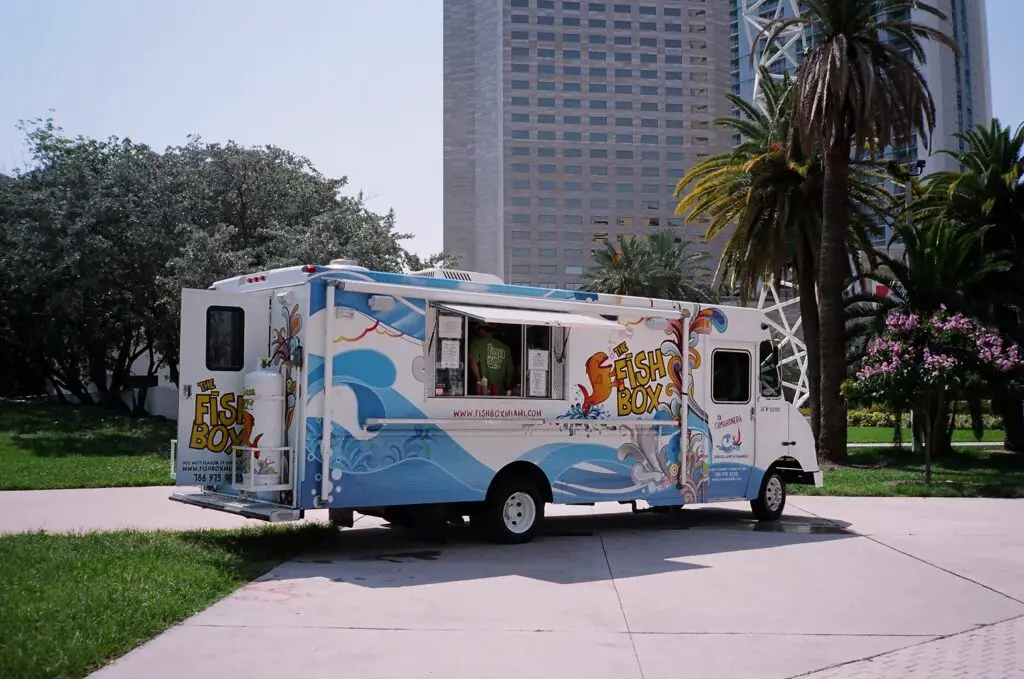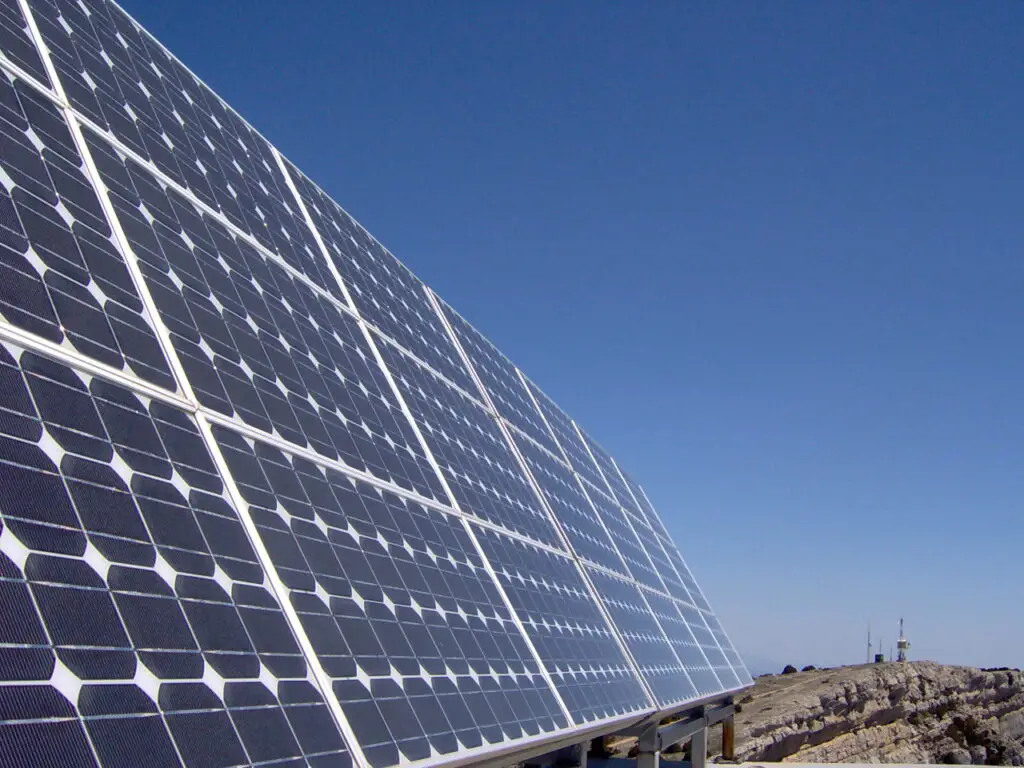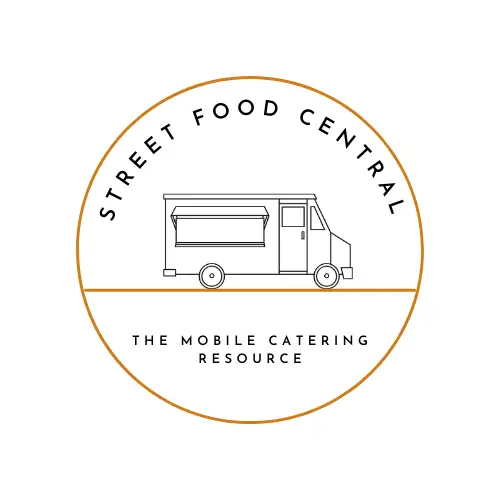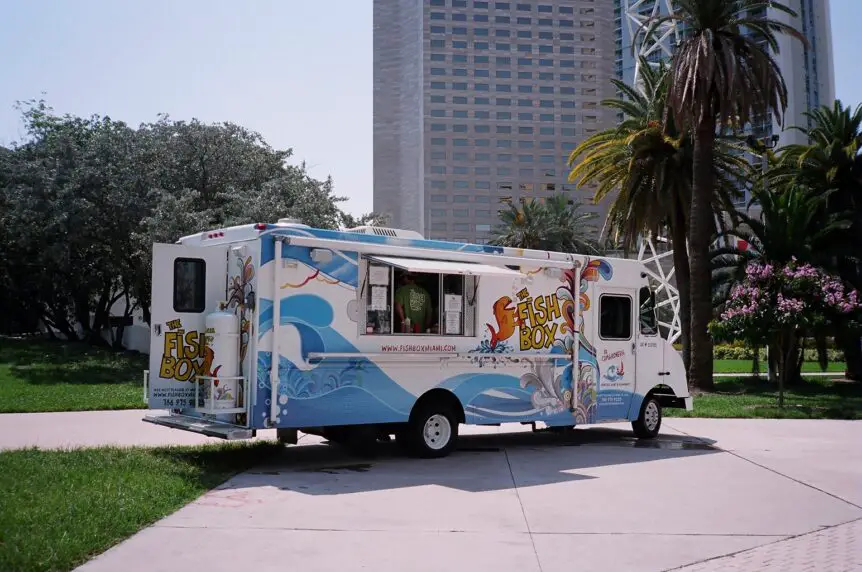Check out the three main ways food trucks get their power to store and cook food

Food trucks and trailers are mini restaurants on wheels that serve some of the best street food you will find at very affordable prices.
They can be found pretty much everywhere these days, especially in cities selling everything from spicy Mexican tacos and Jamaican jerk chicken to street food desserts like banana pancakes and vegan ice cream.
But since they are mobile and not a restaurant you may be wondering where do food trucks get their power to make their food?
Food trucks get their power from three main sources, such as portable diesel generators, Liquefied Petroleum Gas (LPG) cylinders, and solar panels attached to the roof of the food truck.
In this article, I will go into more detail on the types of power sources food trucks use; the pros and cons of each power source; and how much power food trucks actually need to operate efficiently.
Where do food trucks get their power from
Food trucks use a range of electrical and gas equipment to store and cook food.
This equipment obviously needs power and food trucks tend to get it from a number of different sources and sometimes from more than one source alone.
There are three main ways that food trucks get their power.
Diesel & Gas Generators

The most popular way food trucks and trailers get power is from portable diesel generators.
Diesel-powered generations tend to have long lifespans and are designed for heavy and continuous use.
The generator has 230v sockets which can be hooked up with a mains lead to the power inlet usually attached to the outside of the food truck.
Electrical power for food trucks is needed for equipment such as fridges, freezers, microwaves and POS systems (tills).
At larger events such as music festivals, the event organizer will often supply power to the food truck at an additional fee from large three-phase 10,000-watt powered generators.
Pros (diesel generators)
- Diesel generators have a low purchase price
- Long-lasting and robust
- A continuous power supply
Cons (diesel generators)
- Diesel generators tend to be loud, creating noise pollution
- Diesel generators produce high C02 omissions
Source: Science Direct
Related articles:
Liquefied Petroleum Gas (LPG)

Food trucks also use a lot of gas-powered equipment to cook their food, such as cast iron gas hob burners, grills, griddles, and BBQs.
This type of equipment is therefore typically run off LPG gas held in propane cylinders.
Liquefied Petroleum Gas (LPG) is a clean-burning, low-carbon fossil fuel.
This makes it both cleaner and cheaper to use than diesel-powered generators.
If the food truck has both electrical and gas-powered equipment then they will most likely use a combination of both.
Pro’s
- Cheaper than petrol (up to 50%)
- Better for the environment (produces 14% fewer CO2 emissions than petrol)
Cons
- Less efficient than petrol (produces 10% less power)
- Heavy cylinders can be less mobile
Source: Club Technical
Solar Power

This way of providing power to a food truck is the most sustainable and eco-friendly but currently the least common.
Solar panels (also known as, solar-electric modules or photovoltaics) can be mounted onto the roof of a food truck just like solar panels are attached to the roof of a house to absorb UV rays from the sun and convert them into power.
This power is then stored and used to power part or all of the food truck’s needs
Despite this currently being the least common way food truck operators get their power things are likely to change.
Due to the call to use fewer fossil fuels and to help the environment, this could become more popular in the future as the food truck industry evolves
Pros
- Renewable energy source
- Low maintenance costs
- Cheap to run
Cons
- Sunlight dependant
- The initial cost is relatively high
- Panels can take up a lot of space if electrical requirements are high
- Currently extremely inefficient compared to other energy sources
Source: Green Match
Related articles:
- 12 Types of Vehicles Used for Food Trucks
- 4 Best Natural Gas Portable Generators 2023
- What Equipment Do I Need For A Food Truck?
How much power is needed for a food truck
As mentioned food trucks sell different types of food using various types of equipment.
Therefore how much power a food truck needs will very much depend on individual operational needs.
For a food truck that uses a lot of equipment that is powered by LPG gas, it can probably get away with using a generator that produces a minimum of 3000 watts or 25 amps.
This could be to run basic equipment such as a fridge or blender.
However, if a truck uses a lot of electrical appliances it will need a generator with a bit more power, with a minimum of 5000 watts up to around 7000 watts.
A good tip to power a food truck is to get the right balance between gas-run and electrical-powered equipment.
Final thoughts
Food trucks get their power from a number of sources from diesel generators and LPG gas cylinders to eco-friendly technology such as solar panels.
Depending on what equipment the food truck uses will often determine what power source or sources are used to store and cook food.
As society is moving towards a more sustainable way of doing things in terms of preserving the planet it’s probably a wise choice to go in the same direction.
Power sources such as LPG provide cleaner energy than diesel engines and if you really want to reduce your carbon footprint by up to 80% solar panels are the way to go.
Gavin D is the founder of Street Food Central and Tru Foo Juice Bar Co. and has worked in the mobile catering industry for over 7 years.

